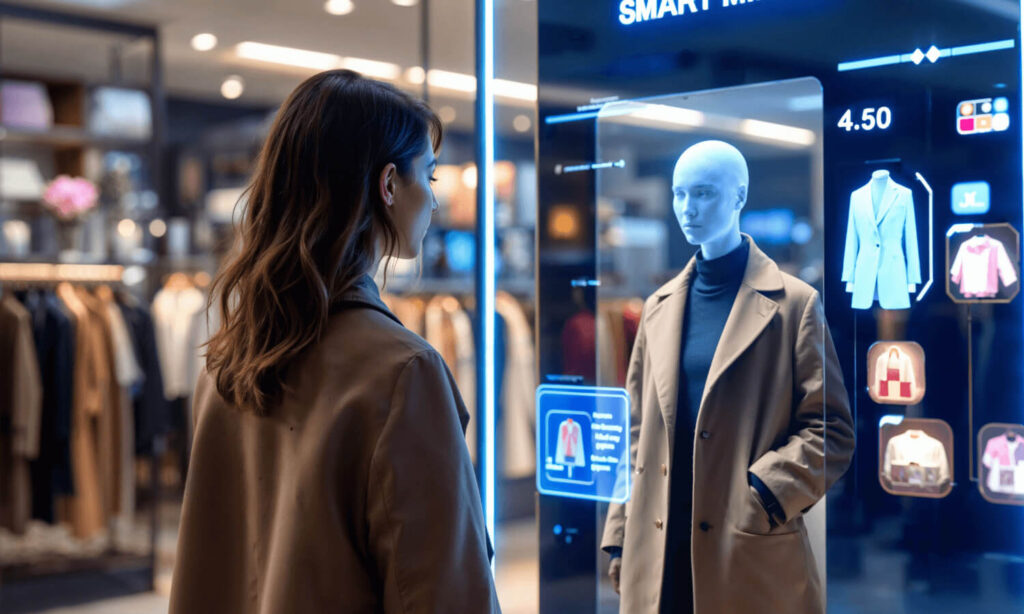
How many times have you bought an article of clothing online, carefully looking through the size measurements and customer reviews to get an idea as to what size you should buy? How frequently does the product arrive, and regardless of your methodically executed guesstimations, it doesn’t quite fit? Or if it does fit, it doesn’t look like you imagined?
For most people, this is an exceedingly common experience. You see a great sale online from one of your favorite stores, and jump at the opportunity. Your friend sends you a link to a new small business that’s expanding its online presence, and you want to show support. Maybe you’re even scrolling Instagram, and an advertisement pops up with something you just have to have, and two clicks later it’s yours.
Shopping online provides phenomenal convenience for consumers, allowing them to shop from the comfort of their home, or boredom of their train ride commute, and have an exciting arrival greet them just days later at their doorstep. It becomes much less convenient, and much more of a hassle, when the clothes don’t fit and need to be returned. This frustration extends well beyond the customers, as companies must often absorb losses in the return process, given the limits of value extraction, especially for apparel, in the reverse supply chain. Fortunately, new technologies will help reduce the number of returns both customers and companies must deal with. With augmented reality (AR), a new era of online shopping is quickly being ushered in.
Apparel
The most obvious use of AR in the e-commerce space is with apparel. Customers can use new AR technologies to see how the clothes they are considering would not only fit, to help determine what size to buy, but also how they would look. As we’re all familiar with, articles of clothing vary not only by size and style, but also cut. A medium from one brand can be completely different than a medium from another, and even sizes within brands can have variation from item to item. Virtual try-ons, or virtual fitting rooms, allow customers to feel as though they’re in the store without having to take a single step outside. This greatly increases customer confidence that the purchase will meet their expectations and significantly reduce return rates. The United States Postal Service found that 25% of apparel bought online was returned. AR can help lower that number closer to the 3% return rate brick and mortar clothing retailers experience.
Furniture
The value of AR isn’t limited to clothing purchases, as many home decor, furniture, and appliance companies are already using the technology to help customers envision how their products would look in their homes. Major retailers including IKEA and The Home Depot have AR features in their apps, so customers can simply point their phones at a space in their living room and see what a new couch would look like, or if the barbecue they want fits on their patio. No need to bust out the tape measure and crawl around, scribbling the dimensions on a piece of paper, before wading through small print specifications in the massive warehouse stores. This level of convenience only encourages greater spending and satisfaction. Some apps even offer recommended products based on the dimensions analyzed through the phone’s camera, further expediting the process of moving inventory and pleasing customers. In some ways, it’s an evolution of the ‘try before you buy’ approach, but instead of requiring the substantial cost and effort of moving, say, a table in and out of a customer’s home, all you need is a smartphone app. We will undoubtedly see more furniture retailers follow IKEA and The Home Depot’s precedent.
Makeup
Similar to the variations in style that lead to many clothing returns, the nearly infinite shades and sheens available with makeup products can create an arduous task for customers to find the perfect match, and companies to process used returns. Sephora’s app contains a “Virtual Artist” feature, that lets customers use AR technology to try new palettes by simply looking in their front-facing camera. Customers can try everything from lipstick, to contour, to foundation, and even access helpful makeup tutorials in the app. For products as specific as makeup, with so much variation in skin tone and personal preference that products must match, customers and companies alike can save time and money by using these new technologies. Even Amazon, often at the forefront of implementing new technologies into their services, offers AR lipstick testers in their app. Customers can upload a photo of themselves or choose from the default models with a wide variety of complexions to find their match.
The most sustainable and best-functioning supply chains often share one common feature — satisfied parties that have built strong relationships to work together well. When suppliers and manufacturers have good communication, share important information, and maintain a successful track record, business flourishes. The same goes for the relationships between companies and their customers, and AR technologies can help satisfy both parties in the ecommerce industry.






